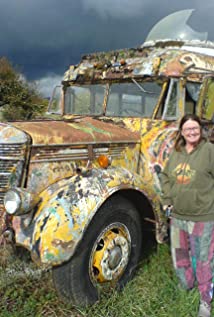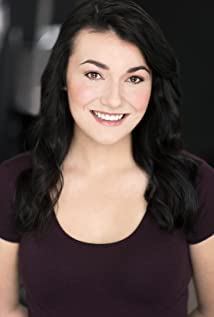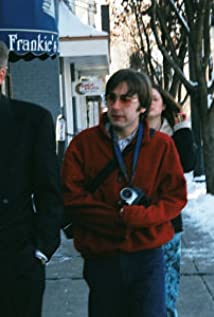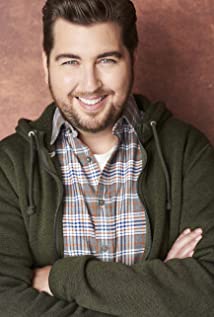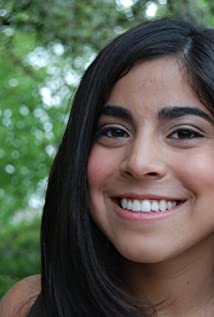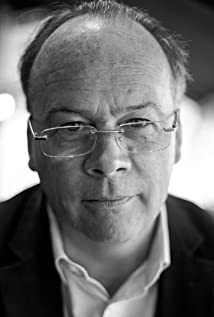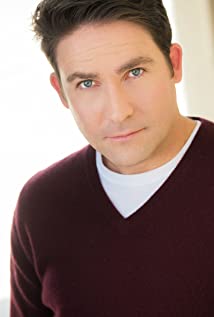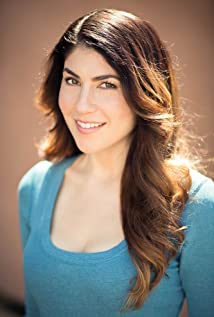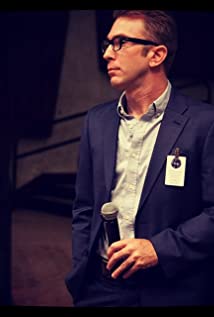Busby Berkeley was born on November 29, 1895 in Los Angeles, California, United States, is Miscellaneous Crew, Director, Music Department. Busby Berkeley was one of the greatest choreographers of the US movie musical. He started his career in the US Army in 1918, as a lieutenant in the artillery conducting and directing parades. After the World War I cease-fire he was ordered to stage camp shows for the soldiers. Back in the US he became a stage actor and assistant director in smaller acting troupes. After being forced to take over the direction of the musical "Holka-Polka" he discovered his talent for staging extravagant dance routines, and he quickly became one of Broadway's top dance directors. Producer Florenz Ziegfeld Jr. called him to direct the dance routines for his production of "A Connecticut Yankee in King Arthur's Court". Eddie Cantor, who starred in the long-running Ziegfeld production "Whoopee!", suggested Berkley create the dance routines in the film version )Whoopee! (1930) and Ziegfeld agreed.At first in Hollywood Berkeley wasn't satisfied with the possibilities of his job--at the time, dance directors trained the dancers and staged the dances. The director chose camera positions and the editor chose which of the takes were shown to the audience. Berkeley wanted to direct the dances himself and convinced producer Samuel Goldwyn to let him try. One of the first chances he took was that he used only one camera in his films. He also showed close-ups of the chorus girls. Asked about this, he explained, "Well, we've got all the beautiful girls in the picture, why not let the public see them?" With the decline of musicals in 1931 and 1932, he was thinking of returning to Broadway when Darryl F. Zanuck, chief producer at Warner Brothers, called him in to direct the musical numbers of Warners' newest project, the backstage drama 42nd Street (1933). Berkeley accepted and directed great numbers like "Shuffle Off To Buffalo", "Young and Healthy" and the grandiose story of urban life, the finale "42nd Street". The film was a smash hit, and Warner Brothers knew who made it such an extraordinary success--Berkeley, as well as composer Harry Warren and lyricist Al Dubin, got seven-year contracts. Berkeley created musical numbers for almost every great musical that Warner Brothers produced from 1933 to 1937. His overhead shots forced him to drill holes in the studio roofs, and he used more dancers with each succeeding picture. However, by the late 1930s the musical was in decline once again, and Berkeley had nothing to do as a choreographer. He directed two non-musical pictures for Warner Brothers then went to MGM, where he choreographed the final number from Broadway Serenade (1939) with Jeanette MacDonald. As a director and choreographer he worked on four pictures with teenage stars Judy Garland and Mickey Rooney. He also choreographed the "Fascinatin' Rhythm" finale for MGM's reigning tapping star, Eleanor Powell in Lady Be Good (1941). He directed Gene Kelly in his first picture, For Me and My Gal (1942). Kelly, who choreographed his own numbers, learned a lot from Berkeley.Berkeley worked for 20th Century-Fox in The Gang's All Here (1943) with its surrealistic number "The Lady in the Tutti-Frutti Hat". In 1949 he directed his last picture, Take Me Out to the Ball Game (1949), but this time the choreography was by Gene Kelly. Berkeley did a few numbers in the early 1950s but, by the end of the decade, he was all but forgotten. A revival of his films in the late 1960s brought him some popularity and he was asked to return to Broadway and supervise the dance direction in the revival of a Vincent Youmans musical comedy from 1925. One of the actresses in this production was Ruby Keeler, one of his leading ladies in Warner musicals. When the production went on tour in 1972, one of the road cast was Eleanor Powell. The production was a smash hit. When he walked on stage after one opening night, the house exploded with applause.A strange fact is that Busby Berkeley never had a dancing lesson and, in his early days, was very afraid of people finding out. He often drove his producers crazy when he gave orders to build a set and then sat in front of it for a few days, thinking up the numbers.
Busby Berkeley is a member of Miscellaneous Crew
Does Busby Berkeley Dead or Alive?
As per our current Database, Busby Berkeley has been died on March 14, 1976(1976-03-14) (aged 80)\nPalm Desert, California, United States.
🎂 Busby Berkeley - Age, Bio, Faces and Birthday
When Busby Berkeley die, Busby Berkeley was 80 years old.
| Popular As |
Busby Berkeley |
| Occupation |
Miscellaneous Crew |
| Age |
80 years old |
| Zodiac Sign |
Sagittarius |
| Born |
November 29, 1895 ( Los Angeles, California, United States) |
| Birthday |
November 29 |
| Town/City |
Los Angeles, California, United States |
| Nationality |
United States |
🌙 Zodiac
Busby Berkeley’s zodiac sign is Sagittarius. According to astrologers, Sagittarius is curious and energetic, it is one of the biggest travelers among all zodiac signs. Their open mind and philosophical view motivates them to wander around the world in search of the meaning of life. Sagittarius is extrovert, optimistic and enthusiastic, and likes changes. Sagittarius-born are able to transform their thoughts into concrete actions and they will do anything to achieve their goals.
🌙 Chinese Zodiac Signs
Busby Berkeley was born in the Year of the Goat. Those born under the Chinese Zodiac sign of the Goat enjoy being alone in their thoughts. They’re creative, thinkers, wanderers, unorganized, high-strung and insecure, and can be anxiety-ridden. They need lots of love, support and reassurance. Appearance is important too. Compatible with Pig or Rabbit.
Some Busby Berkeley images
Biography/Timeline
1864
Berkeley was born in Los Angeles, California, to Francis Enos (who died when Busby was eight) and stage Actress Gertrude Berkeley (1864–1946). Among Gertrude's friends, and a performer in Tim Frawly's Stock company run by Busby Berkeley's father, were Actress Amy Busby from which Berkeley gained the appellation "Buzz" or "Busby" and actor William Gillette, then only four years away from playing Sherlock Holmes. Whether he was actually christened Busby Berkeley william Enos, or Berkeley william Enos, with "Busby" being a nickname, is not unanimous – the "Child's names" entry on his birth certificate is blank.
1917
In addition to her stage work, Gertrude played mother roles in silent films while Berkeley was still a child. Berkeley made his stage début at five, acting in the company of his performing family. In 1917, he lived in Athol, Massachusetts, working as an advertising and sales manager. During World War I, Berkeley served as a field artillery lieutenant. Watching Soldiers drill may have inspired his later complex choreography. During the 1920s, Berkeley was a dance Director for nearly two dozen Broadway musicals, including such hits as A Connecticut Yankee. As a Choreographer, Berkeley was less concerned with the terpsichorean skill of his chorus girls as he was with their ability to form themselves into attractive geometric patterns. His musical numbers were among the largest and best-regimented on Broadway.
1932
His earliest film work was in Samuel Goldwyn's Eddie Cantor musicals, where he began developing such techniques as a "parade of faces" (individualizing each chorus girl with a loving close-up), and moving his Dancers all over the stage (and often beyond) in as many kaleidoscopic patterns as possible. Berkeley's top shot technique (the kaleidoscope again, this time shot from overhead) appeared seminally in the Cantor films, and also the 1932 Universal drama film Night World (where he choreographed the number "Who's Your Little Who-Zis?"). His numbers were known for starting out in the realm of the stage, but quickly exceeding this space by moving into a time and place that could only be cinematic, only to return to shots of an applauding audience and the fall of a curtain. As Choreographer, Berkeley was allowed a certain degree of independence in his direction of musical numbers, and they were often markedly distinct from (and sometimes in contrast to) the narrative sections of the films. The numbers he choreographed were mostly upbeat and focused on decoration as opposed to substance; one exception to this is the number "Remember My Forgotten Man" from Gold Diggers of 1933, which dealt with the treatment of World War I veterans during The Great Depression.
1933
Berkeley's popularity with an entertainment-hungry Great Depression audience was secured when he choreographed four musicals back-to-back for Warner Bros.: 42nd Street, Footlight Parade, the aforementioned Gold Diggers of 1933, Dames, and Fashions of 1934, as well as In Caliente and Wonder Bar with Dolores del Río. Berkeley always denied any deep significance to his work, arguing that his main professional goals were to constantly top himself and to never repeat his past accomplishments.
1935
In September 1935, Berkeley was the driver responsible for an automobile accident in which two people were killed, five seriously injured; Berkeley himself was badly cut and bruised. Berkeley, brought to court on a stretcher, heard testimony that Time magazine said made him wince:
1938
Berkeley was married six times and was survived by his wife Etta Dunn. He was also involved in an alienation of affections lawsuit in 1938 involving Carole Landis.
1939
As the outsized musicals in which Berkeley specialized became passé, he turned to straight directing. The result was 1939's They Made Me a Criminal, one of John Garfield's best films. Berkeley had several well-publicized run-ins with MGM stars such as Judy Garland. In 1943, he was removed as Director of Girl Crazy because of disagreements with Garland, although the lavish musical number "I Got Rhythm", which he directed, remained in the picture.
1943
His next stop was at 20th Century-Fox for 1943's The Gang's All Here, in which Berkeley choreographed Carmen Miranda's "Lady in the Tutti-Frutti Hat" number. The film made money, but Berkeley and the Fox brass disagreed over budget matters. Berkeley returned to MGM in the late 1940s, where among many other accomplishments he conceived the Technicolor finales for the studio's Esther Williams films. Berkeley's final film as Choreographer was MGM's Billy Rose's Jumbo (1962).
1960
In the late 1960s, the camp craze brought the Berkeley musicals back to the forefront. He toured the college and lecture circuit, and even directed a 1930s-style cold medication commercial, complete with a top shot of a dancing clock. In his 75th year, Berkeley returned to Broadway to direct a successful revival of No No Nanette starring his old Warner Brothers colleague and "42nd Street" star Ruby Keeler; both also played cameos in the 1970 film The Phynx the same year.
1976
Berkeley died on March 14, 1976 in Palm Springs, California at the age of 80 from natural causes. He is buried in the Desert Memorial Park in Cathedral City, California.
1988
Berkeley was inducted into the National Museum of Dance's Mr. & Mrs. Cornelius Vanderbilt Whitney Hall of Fame in 1988.
Busby Berkeley trend










